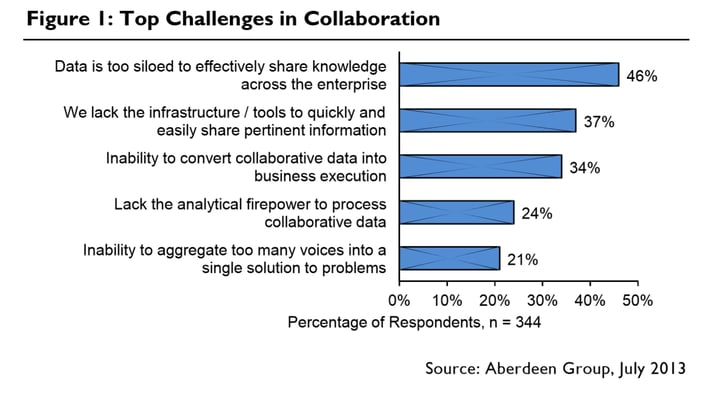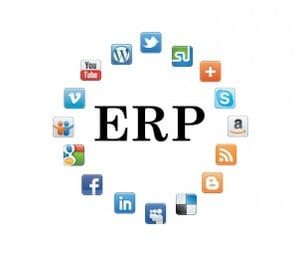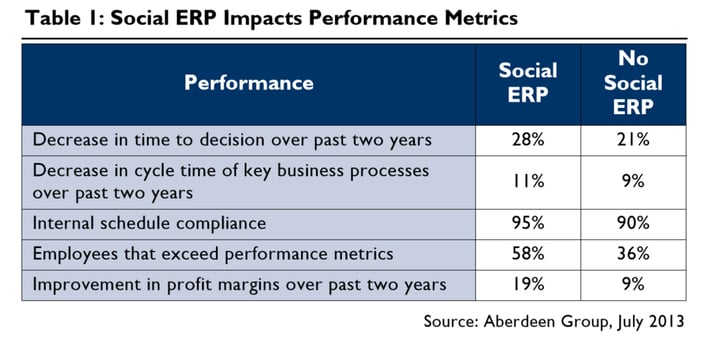In today's environment, managing growth effectively is harder than ever. The challenge mostly involves communication and shared data across the organisation. The world has witnessed the incredible development of social media, which makes us rethink how to turn this into an advantage to communicate in business. Working with Facebook, Twitter and LinkedIn, the new ERP solutions mirroring the functionality of online social networking tools may start the next generation of ERP systems.
Collaboration challenges
Many organizations have difficulty collaborating effectively. In a 2013 ERP Benchmark survey conducted by the Aberdeen Group, the top challenges that organisations face in collaboration were identified.

‘Data is not shared effectively across the enterprise’ stands at the first place. This implies either employees from one function cannot access data from another because of siloed data, or their current available technology does not provide the capacity to distil collaborative data into something useful. Or maybe, organisations cited both an inability to aggregate data and a lack of analytical firepower to make sense of the available data.
Social ERP as the new solution
To solve the above problem, ERP vendors offer a solution called ‘social business’ functionality contained within the ERP system. The new ERP offerings will mimic the way in which employees interact using a social network. They also enhanced the capacities of collaboration and continuous improvement within the workplace. By combining this functionality with ERP systems, the organisation is able to create a single system of record for its knowledge base.
This solution could be forums, profiles and/or wikis. Some of them are integrated social streams so that employees can tag conversations to product, project, customer, equipment ... Because of the similar features to a social network, it’s commonly known as ‘Social ERP’.

How Social ERP enhances collaboration
It‘s effective to use a solution that integrates social networking capacity into the ERP system. This allows users to integrate a variety of familiar functionalities that can make collaboration easier and provide more visibility into the shared knowledgebase.
Take an example of a project-based manufacturer.
A project-based manufacturer creates unique products for each of its customers, all with different contract terms and specific requirements for communication. As the project goes on, specific knowledge about a specific customer are collected. A specific employee, who may leave the company being the only one to have this information, may capture such precious knowledge. By sharing knowledge through social ERP, everyone involved can easily track conversations, projects and processes even after when any member leaves the company. The information is stored for more value in customer engagement.
How to measure results
Organisations that have implementation social ERP perform better in a variety of KPIs. Quicker decisions and more efficient processes will eventually lead to increased profit. While these increases cannot be traced solely to the implementation of this technology, it is evidence that better performing organisations will choose social ERP. The table below shows how Social ERP Impacts Performance Metrics.

The table only shows visible results of Social ERP based on numbers while there are still various other benefits. For instance, managers can document business processes to support lean initiatives, the knowledge base built and maintained will enhance customer engagement.
Social ERP makes your enterprise social, which brings the power of the back office to the front office. If used effectively, not only will this solution drive growth but it can also improve your company’s agility and facilitate competitive advantage.
Download the whitepaper ‘5 levels of collaboration in ERP’
 English
English  Vietnamese
Vietnamese 

